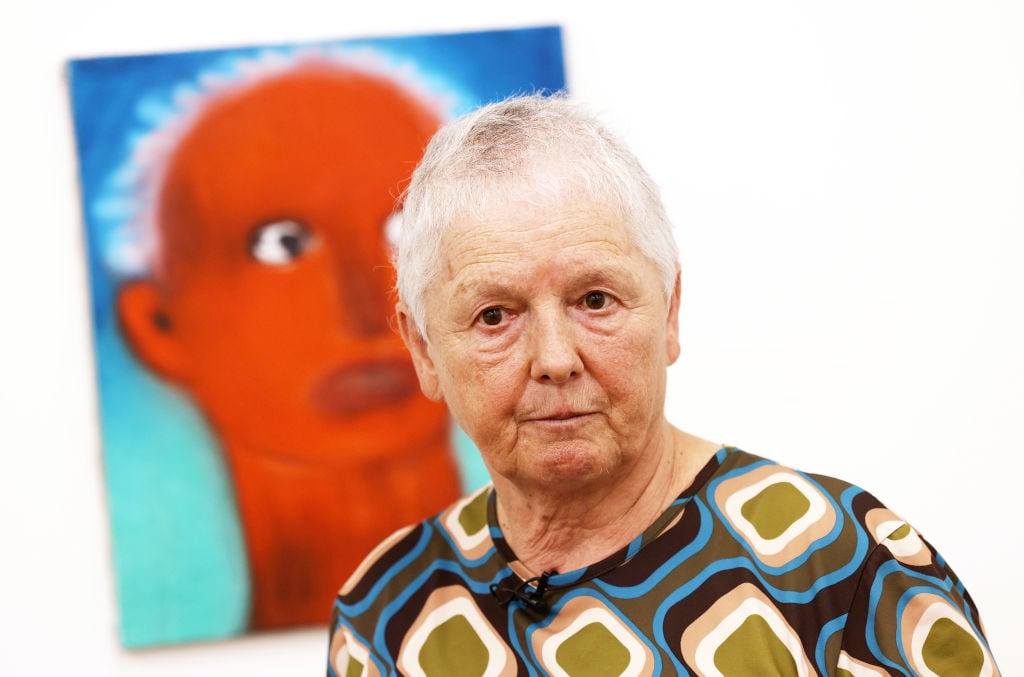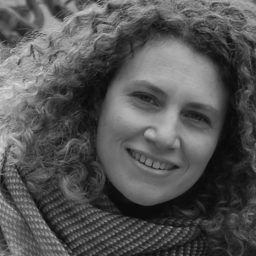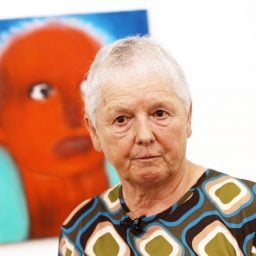A French judge has shot down a legal petition to remove a controversial painting by the Swiss artist Miriam Cahn from an exhibition at the Palais de Tokyo in Paris.
Factions from France’s political far-right brought the litigation against the contemporary art center because they objected to the contents of one of the Swiss artist’s semi-abstract paintings, which they believe depicts the sexual abuse of a child.
The work, titled fuck abstraction!, portrays a scene of forced fellation, which the Swiss artist intended as a denunciation of sexual crimes used as a weapon of war. The plaintiffs—six associations led by the Association Juristes Pour L’Enfance [lawyers for childhood] (JPE)—have interpreted the victim in the scene to be a child, and sought the removal of the work on the grounds that French law forbids the exhibition of pornographic representations of minors.
In a statement released earlier this month by the museum, Cahn clarified that the painting doesn’t feature any children, and that the central victim appears smaller in scale for symbolic reasons. “The contrast between the two bodies shows the corporeal power of the oppressor, and the fragility of the oppressed, on their knees and emaciated by war,” said the artist, who is no stranger to controversy.
Today, French administrative judge Sylvie Vidal threw out the case, noting in her ruling, which Artnet News has viewed, that Cahn’s painting refers to crimes committed in Bucha, Ukraine, during the Russian invasion and “cannot be understood outside of its context,” adding that the artist “aims to denounce the horrors of war.”
The judge’s decision hinged on the fact that she felt the museum took appropriate measures to warn visitors of the sensitive content in the exhibition titled “Ma Pensée Serielle,” [My Serial Thought] by including sufficient explanatory texts, and having additional staff on hand to speak to visitors.

Miriam Cahn, fuck abstraction! (2007-2022). 3009 CAH/P 3029. Courtesy the artist, Galerie Jocelyn Wolff and Meyer Riegger Berlin/Karlsruhe. Photo by François Doury.
A furious discourse over the artwork has been brewing for weeks on social media and talk shows, particularly among far-right platforms and spokespeople. An online petition against the exhibition of the work has been signed over 13,000 times.
The debate rose to new heights last week, when the French culture minister Rima Abdul Malak was forced to defend the artist and her work in the French parliament. Far-right MP Caroline Parmentier made an impassioned plea for the culture ministry to intervene and remove the work. Malak retorted that “freedom of expression and creation is guaranteed by law,” and said that it was not up to her or the elected official, but the courts, to determine whether any crime was committed in exhibiting the work.
Adeline Le Gouvello, lawyer for the JPE, told Artnet News that the association plans to appeal the court’s decision to France’s State Council, which acts as the supreme court of appeal for administrative law courts. She stressed that the administrative judge did not specify in her ruling whether the painting appears to depict a child, as critics maintain. Le Gouvello said French law states that it can be assumed any figures represented in a pornographic context are minors if they appear to be so, unless clearly demonstrated or stated otherwise.
She also argued that the fact that the artist and museum made additional explanatory statements after the controversy ignited suggests that they were not clear enough to begin with. “If the painting is so problematic—as they seem to suggest—then why not respond properly and make it inaccessible to minors?” Le Gouvello asked. The lawyer said that she and fellow plaintiffs are “not against freedom of expression,” but simply want one painting removed. “If one wants to denounce horrors, that’s fine. But we cannot do so by spreading those horrors further. There are other ways,” she reasoned. She said a decision on the appeal may be handed down in the coming weeks.
The Palais de Tokyo has not denied the shock value of Cahn’s works. But the art center insists that discomfort is integral to artistic creation and freedom of speech, as long as it is contextualized.
“We know the painting is shocking—though it is not pedo-pornographic,” Palais de Tokyo lawyer Paul Mathonnet defended the work to Artnet News. “It would be excessive and would violate the freedom to create, if we were to completely forbid the painting… If we go in that direction, we’ll have to start emptying out museums, and closing a lot of galleries. All museums show sexually explicit and violent works.”
In a statement welcoming the court’s decision to throw out the case, the art center said it regretted “the instrumentalization” of Cahn’s artwork by fringe groups.
For Mathonnet and his associate, Richard Malka, the controversy illustrates the tip of a “culture war” between fringe groups in France and the rest of the country. Malka said local extremists have been influenced by ideologies “blown in from across the Atlantic,” in the U.S., referring specifically to “cancel culture on the far-left,” and “Trumpism, on the far-Right.”









